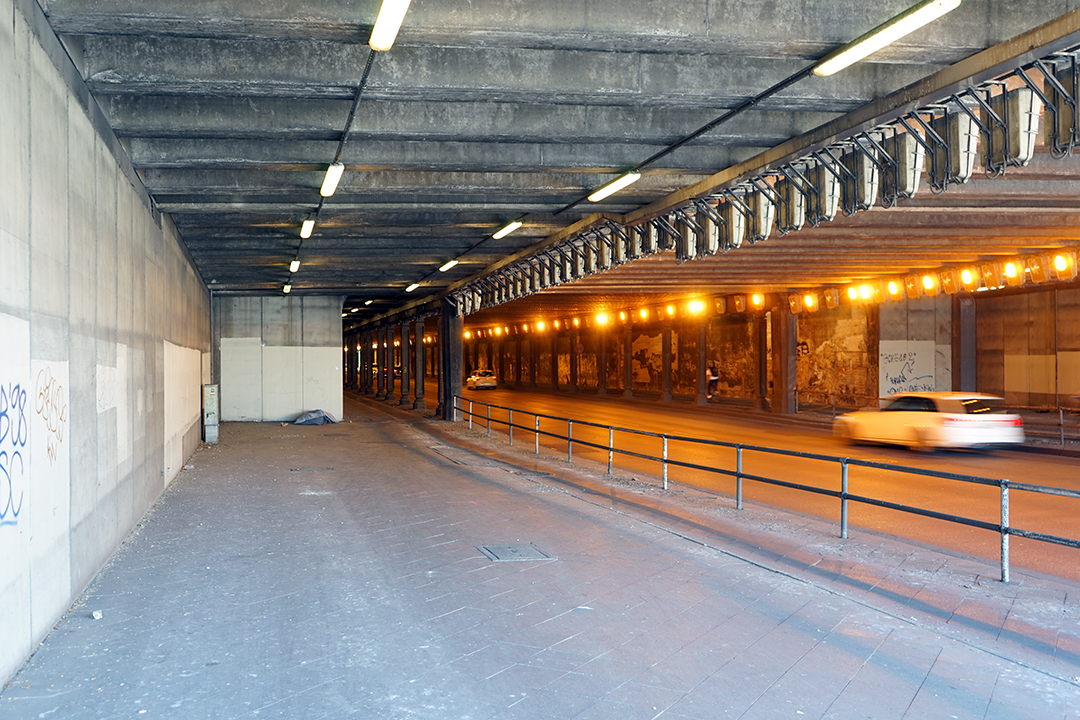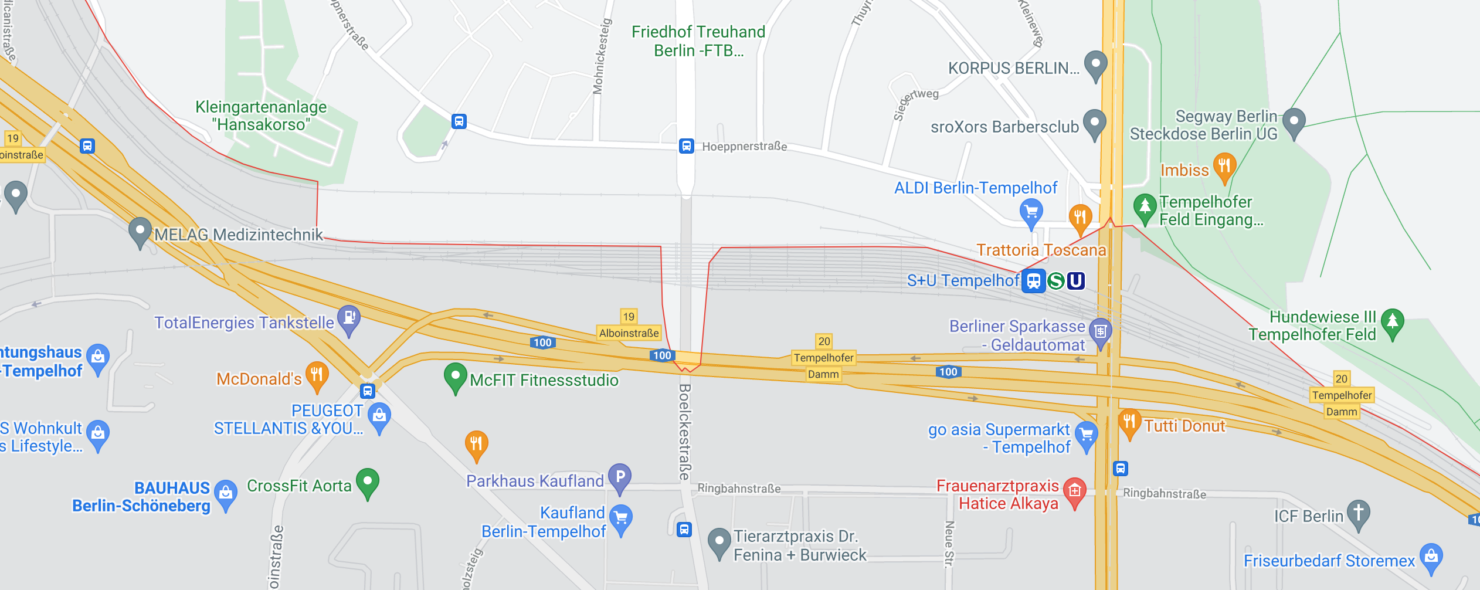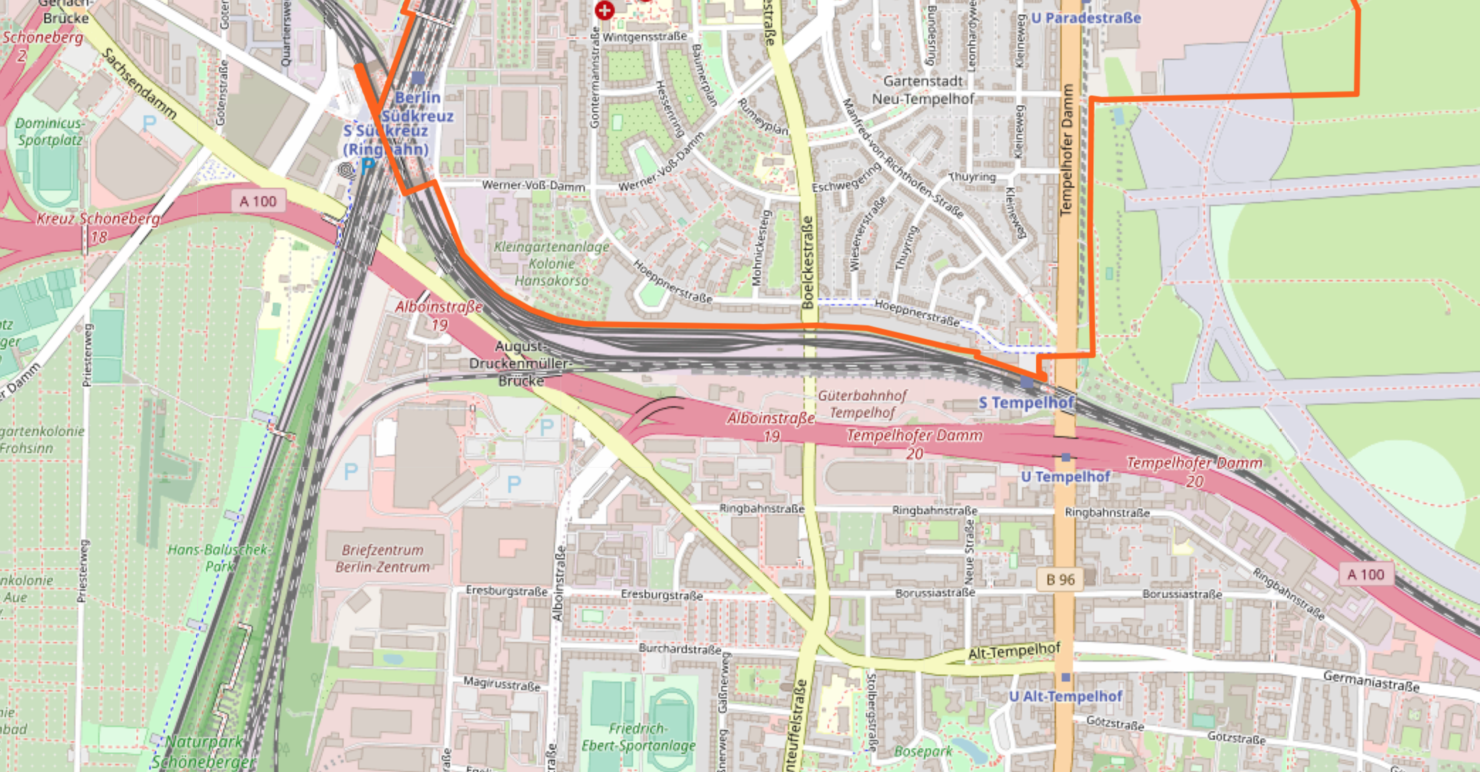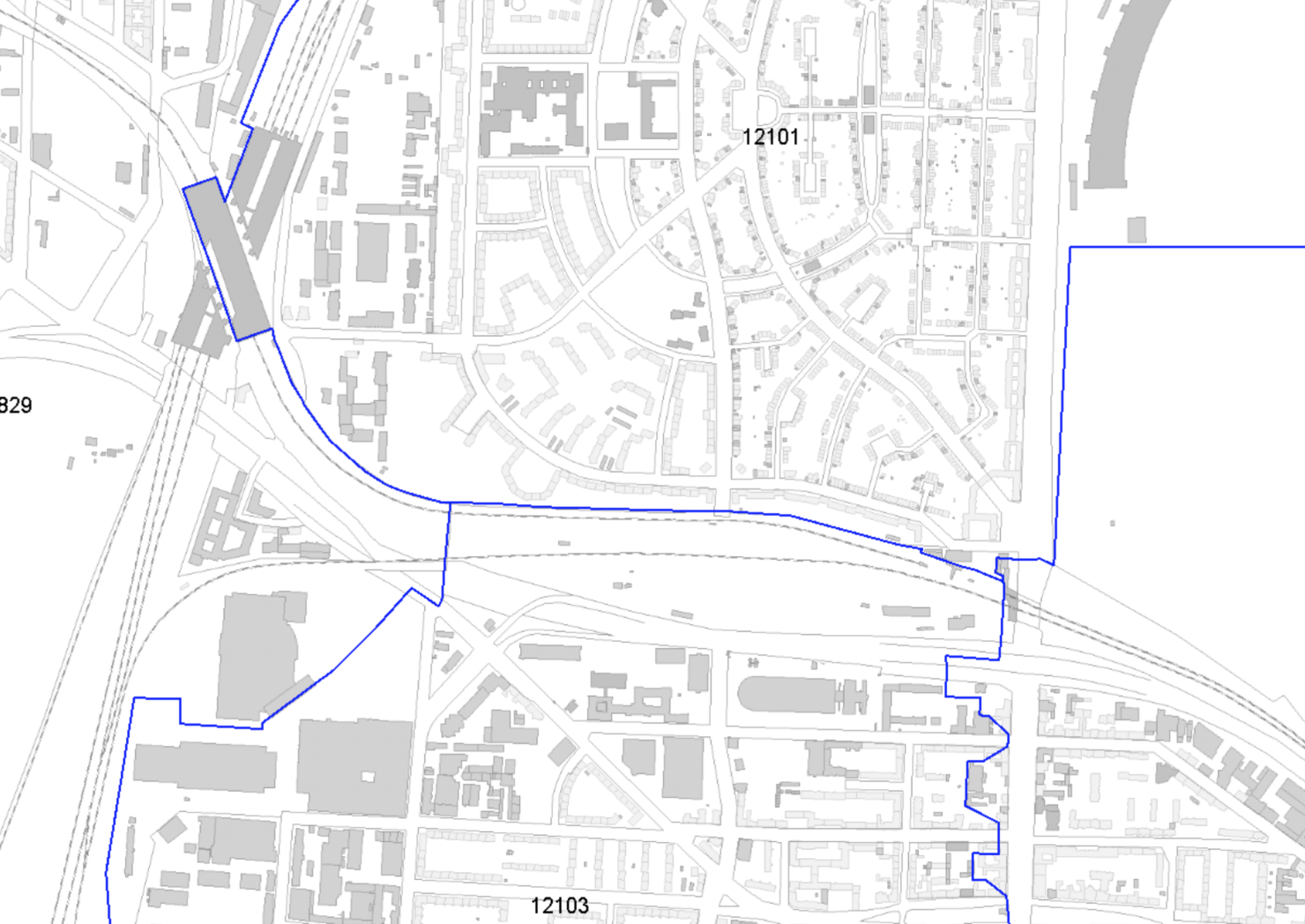Ring Around the Ringbahn: A Postscript
I’m suffering from time-slippage. It’s probably just the effects of middle-age compounded by the ongoing pandemic, which has screwed up so many people’s sense of the passage of time. In addition to this, one year ago I left Berlin to temporarily live and work in Doha, Qatar, so my internal temporal reference point is now pegged firmly to the beginning of 2021, and my sense of place is as messed-up as can be.
I’m therefore stunned to find that seven months have passed since I was asked to contribute to Portrait of The Ringbahn, a podcast by George Kafka and my good friend and Way Too Concrete collaborator, Fiona Shipwright. The show was originally broadcast on Resonance FM on May 14th 2021.

The podcast is a “sonic, historic and personal exploration” of the Ringbahn, the orbital railway which runs around Berlin. Kafka and Shipwright set off to walk the train’s 37-kilometer route, recording their progress and their conversations as they went. The final piece condenses this journey, and the voices of several long- and short-term Berliners into an hour-long piece – the time it takes to ride the train on a full loop.
Apart from my own meandering thoughts, the podcast features wonderful contributions by Fernande Bodo, Chloé Borreguero, Larissa Fassler, Florian Heilmeyer, Anna Hentschel, Paul Meyer, Meg Miller, Julian Nindl, Noshe, Gunter Ruckes, Kai Schnier and Felix Wierschbitski.
Below you’ll find the podcast. I recommend strapping on your headphones whilst sprawling on the sofa for a full listen. A transcript of my contribution follows, and a bit below that you’ll find out why I characterised the underpass pictured above as a “weird bureaucratic peninsular”. Then I offer a humbled postscript to the whole story.
I think the Ringbahn exists only fully in the imagination. That’s where it becomes complete: a mixture of the lived and the dreamt. Perhaps I say that because my experience of it is so limited. I think I’d prefer that it existed exclusively in the imagination, as I’ve always had a bit of a problem with the Ringbahn, for reasons I’ve not closely examined. But I suspect that long waits on drafty platforms has a lot to do with it.
Unlike lines which have two terminus stations, the Ring always carries with it the promise or the threat of perpetual circumnavigation. No one actually does that for practical reasons. Hobbyists and researchers might risk it now and then, but the industrial utopia of a complete circle connecting all parts of the city is inseparable from the obvious nightmare of being trapped on the Ring forever, unable to exit the train.
Practically speaking, local transport provides us with efficient A to B services. But the Ringbahn is able to do more than that, and less than that, simultaneously. For example: to reach point B in the north-east from A in the south-west, you have to go via C in the north-west or D in the south-east. Similarly you could dispense with B altogether and travel from A directly to A, and abandon any notion of origin and destination.
When I think of the Ring as an ideal circle, I find that it carries a lot of associations with it. To circle around a subject (in this case Berlin), is either a way of avoiding speaking about it directly, or of closing in on it before an attack. But the circle is also a boundary, like a perimeter wall. And that’s probably how I experience the Ringbahn the most. I don’t remember when I last travelled along it, but in recent years I’ve often walked underneath it, traversing it, in order to escape the pull of the inner districts.
In particular I’m thinking of the underpass on Boelckestraße, between Südkreuz and Tempelhof stations, which not only passes under the Ringbahn, but the orbital motorway as well. It’s a grubby 225 meter stretch of yellow-lit murk, made deafeningly loud by the traffic and the subsonic rumble of the trains above. It’s not just an imposing physical boundary, but a peculiar administrative one too, where the postal code 12101 pokes into neighboring 12103 for the entire length and width of the tunnel, like some weird bureaucratic peninsular. The Ringbahn isn’t just a line, it’s a space which projects upwards and downwards, and exerts itself metaphysically on the surroundings.
Beyond the tunnel, I’ve often been struck by the light, which feels refreshed and brightened. Beyond the Ring is Berlin’s leafy exterior, where it’s possible to put aside the pretensions of the central districts, and find ones feet in the suburbs.
Postscript

Above you can see how on Google Maps the postal code 12101 pokes into 12103 through the underpass on Boelckestraße. The reason for my fanciful characterisation of the tunnel.
Foolishly, I didn’t fact check this at the time, too beguiled I was by the implications of a massive, alternative, geo-bureaucracy superimposed onto physical space. Open Street Map tells a more sober story, perhaps because of its fundamentally different approach to information gathering which relies heavily on community contributions, much like Wikipedia.

In fact, it’s possible to find out who exactly edited the line which describes the southern border of 12101. His name is Stefan, and on Open Street Maps (OSM) he goes by the handle of atpl_pilot. On his profile page, he has a bitter lesson for me:
“Als gelernter Pilot, der auf höchst präzise Karten und Informationen angewiesen war, sind mir Ungenauigkeiten ein Gräuel. Präzision kann Leben retten!”
Translated: “As a trained pilot who has relied on highly precise maps and information, I find inaccuracies to be an abomination. Precision can save lives!”
Damn, Stefan!
I stand humbly corrected, and offer my apologies to George and Fiona for my abomination. In a way, I’ve fallen into my own trap, too. Back in 2019 I wrote a skeptical 2,000 word critique of Google Maps following a trip to Madrid. With hindsight, the anomaly which triggered my imagination is probably the result of some glitch symptomatic of the kind of semi-automated data extrapolation Google perform to assemble their map layers.
Stefan also addresses the issue of postal codes on his OSM profile page, noting that postal code borders shown on the website of none other than Deutsche Post AG, don’t align with official district maps! So perhaps there is room for further flights of fanciful speculation: stealth postal codes used by the German postal service to deliver packages to hidden addresses tucked away behind the service tunnels of railway underpasses. A network of safe-houses scattered into pockets of overlapping geodata, invisible to local authorities. It sounds like a lost collaboration between Thomas Pynchon and China Miéville.
However, we can go a step further down this rabbit hole. The best source of truth for this kind of question must surely come from the oddly named FIS Broker, Berlin’s online geodata catalogue, which I have used exhaustively for my kettle-hole research. FIS Broker allows the user to overlay a wide variety of geodata sets onto a base map of Berlin. Handily, they offer a postal code map, which I should have consulted last May:

Sadly, and unsurprisingly, no anomalies are to be found in the Berlin Senate’s own geodata: oh, other than the fact that the tunnel isn’t marked at all! And I find myself wondering what all those meandering dog-teeth are along the eastern edge of 12103.
An interesting coincidence or congruity concludes this footnote, however.
Stefan, our meticulous OSM geodata editor, mentions that he was a pilot. Perhaps he was drawn to this part of Berlin for its proximity to the former Tempelhof Airport and the neighborhood contained by the 12101 postal code which is known locally as the Fliegerviertel, or the Aviators’ Quarter.
It follows then that Boelckestraße is named after the pilot and air force officer Oswald Boelcke (born 1891), who founded the German school of aerial dogfighting. In 1916 he brought a group of combat pilots together to form Germany’s first fighter squadron. Boelcke emerged unscathed from 40 dogfights during WWI, only to die over Bapaume in a collision with a member of his own squadron. Accurate maps wouldn’t have saved him from that particular fate.